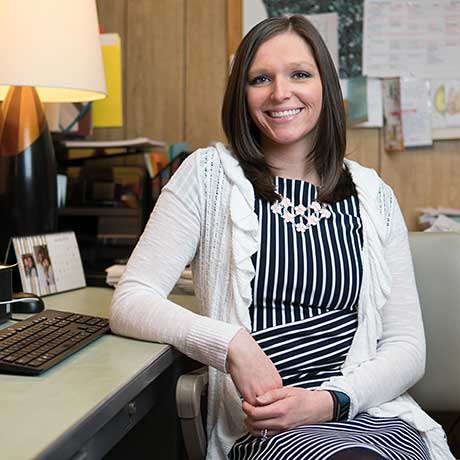Many educators already understand that instruction to support social-emotional learning (SEL) in children and adolescents is not only beneficial but a necessary part of education today. In fact, federal legislation through the Individuals With Disabilities Education Improvement Act of 2004 (IDEA) as well as individual mandates in 15 states have required schools to incorporate SEL instruction and standards (Gabriel et al., 2019). In addition, another 15 states have SEL policies in place that encourage programming (Gabriel et al., 2019). Furthermore, the U.S. Department of Education has recommended that schools utilize a multitiered approach to SEL in order to meet the needs of all students (IDEA, 2004).
Another approach often associated with schools’ multitiered SEL implementation practices is Positive Behavioral Interventions and Supports (PBIS). However, PBIS and SEL are not interchangeable. Specifically, the goal of PBIS is to improve and maintain positive behavior among students in school. In contrast, the goal of SEL is for students to develop in specific competency areas, such as self-understanding, relationship building, and decision-making. With that said, the two systems can work simultaneously to accomplish both goals (Bear et al., 2015). A plethora of SEL and PBIS programs are available, so it is important for the decision makers (principals, curriculum coordinators, school counselors, school psychologists) regarding curricula in this area to be knowledgeable about evidence-based SEL programs. Read more about Responsive Classroom and PBIS here.
However, a recent study (Ervin et al., 2019) of New York State elementary school principals—almost all of whom participate in SEL decision-making—found that they did not currently or previously work in a school that used one of the 23 SELect programs identified by the Collaborative for Academic, Social, and Emotional Learning (CASEL, 2012). In fact, the study found that principals were unfamiliar or only somewhat familiar with the majority of those 23 programs. Only two programs, Responsive Classroom and Second Step, yielded higher familiarity (91.3 percent and 59.2 percent), past use (55.2 percent and 39.5 percent), and current use (34.3 percent and 34.3 percent) scores, respectively (Ervin et al., 2019).
Due to lack of familiarity and use of these highly regarded programs, it is recommended that not only principals but all members of SEL curriculum decision-making committees consider the following seven-stage process for establishing evidence-based programs in their schools.
- The first step would have the principal or the individual tasked as chairperson to convene a team and determine roles and responsibilities. Committee members will likely vary depending on school type and typical divisions of responsibility, but it could include principals, assistant principals, deans of students, curriculum coordinators, directors of special education, teachers, school counselors, school psychologists, and school social workers. Once the committee is established and it is determined that all members are invested in building an SEL program, the group must define the problem; for example, there is no SEL program in the school, the one that is being implemented does not seem to be a good fit, or only a PBIS program is being implemented.
- The second step is for decision-making parties to investigate the current practices being used that are addressing this programmatic problem. For example, if there is no SEL programming or it is not working as intended, the faculty and staff members may be supporting SEL development in their students using other methods or frameworks that they have learned from their peers or from local, state, or more widespread resources. As an example, a quick Google search yielded an article titled “26 Simple Ways to Integrate Social-Emotional Learning Throughout the Day” (Mulvahill, 2021) that is probably frequently read by teachers who would like to help their students. With that final point in mind, the committee should also identify the various resources (both in and outside of the building) that can be used to address missing SEL programming as well as the social and emotional challenges faced by students. Resources to consider include CASEL, Center for Responsive Schools (CRS), and mental health services.
- The third step would have faculty and staff learn the CASEL (2012) competencies surrounding SEL. Developmentally appropriate standards per grade level, such as those developed by CRS (n.d.), can be created or adopted from these competencies. It is recommended that principals and decision-making teams refer to state standards that are well established and incorporate these into their curriculum as well, such as those in Illinois (Illinois State Board of Education, n.d.). Teaching about SEL competencies and using existing standards from the aforementioned organizations will aid in overcoming some of the key barriers to PBIS and SEL implementation, including professional development (Gay, 2016) and resource allocation (that is, time and finances). Learn more here about the five SEL competencies and the SEL standards based on them.
- In the fourth step, the committee should encourage school administrators to request that faculty and staff reflect on these standards quarterly and indicate children’s progression through the standards. For example, a student’s evaluation can be tracked and shared with parents on report cards. This data can then serve as a baseline measure for schools while simultaneously indirectly serving as instruction for caregivers regarding SEL and standards. With a recent uptick in controversy in the news surrounding SEL in schools among parents (Kingkade & Hixenbaugh, 2021; Prothero & Blad, 2021), this critical step could support caregivers’ understanding of content and the specific objectives SEL programs seek to accomplish while at the same time dispelling misconceptions.
- The fifth step, after reviewing baseline data and building rapport and comprehension among families, has the decision-making team explore and select an SEL program that specifically targets competencies that are deemed lacking within the district while keeping in mind training requirements, cost, time, research support, and previous program success. The use of data from well-established and reputable SEL organizations such as CASEL and CRS is recommended during this decision-making process.
- At the sixth step, consult with mental health professionals within the building (school counselors, school psychologists, and school social workers) to create designated group options (tier two) and individual supports (tier three) that will provide additional instruction and support surrounding SEL competencies to students not responding to the schoolwide (tier one) program efficiently. This approach aligns directly with multitiered system of supports (MTSS) frameworks, such as PBIS models for SEL and response to intervention (RTI) approaches for academic needs (Los, 2018). The benefit to using this intervention hierarchy is that all students will be able to develop SEL competencies with the appropriate amount of support for their current level of development.
- Progress monitoring and assessment should take place at regular increments for the seventh step. If the notion of using report cards for dissemination is decided on, that framework will be predetermined with the academic schedule. In tandem with providing information on report cards, the committee should also determine ways to educate and collaborate with community and family members regarding ways to promote competencies within the household, as well as determine whether the skills students are acquiring are translating to out-of-school responsibilities. Some established SEL programs have already embedded this process, and that also should be a consideration during the decision-making process, especially in light of the misconceptions about SEL programming being disseminated at present.
In summation, it is expected that use of this seven-step process, in combination with professional development and addressing barriers of implementation, would greatly improve the decision-making process among principals and other responsible committee members, as well as increase their familiarity and use of evidence-based SEL programs, including those endorsed by CASEL. Furthermore, this process will support the development of all individuals involved in the process. The decision makers will gain skills and knowledge surrounding SEL competencies and implementation of programming, which they can then pass on to their colleagues at other schools to facilitate the continuation of the process. In addition, educators will no longer need to figure out how to support their students on their own. Instead, they will have a program set in place with support from their colleagues as well as professionals who developed the program. Finally, students will be given evidence-based instruction to support their social and emotional well-being, a gift that will enhance their lives and foster their personal growth across domains.
See References Here

Amy L. Button-Ervin
Amy L. Button-Ervin has a PsyD in psychology and is an associate professor of psychology at Alfred University, Alfred, New York.

Brad R. Ervin
Brad R. Ervin has a PsyD in school psychology and is a school psychologist in the Bath-Haverling Central School District in Bath, New York.
